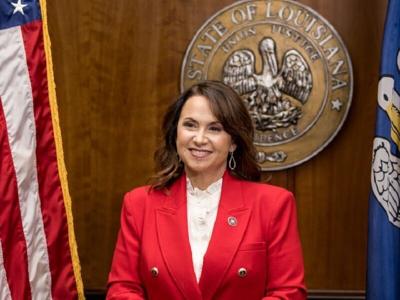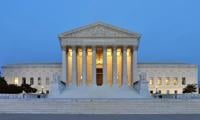
Louisiana Attorney General Liz Murrill
The U.S. Supreme Court has extended the legal drama over Louisiana’s current congressional redistricting map, opting to rehear a combination of cases during its next term to determine if the map complies with the Equal Protection Clause.
“These cases are restored to the calendar for reargument,” the high court said in a terse June 27 opinion. “In due course, the court will issue an order scheduling argument and specifying any additional questions to be addressed in supplemental briefing.”
The wording of the opinion, which leaves Louisiana’s current congressional map containing two majority-Black districts in place for now, indicates that the court’s review will occur sometime during its next term, which begins in October of this year, according to the National Redistricting Foundation (NRF), a nonprofit that supports the current map.
A key case to be decided by the high court is Louisiana, Appellant v. Phillip Callais et al., in which non-African American Louisiana residents challenged the legality of the current map as a racial gerrymander that violates the Equal Protection Clause of the U.S. Constitution.
The map last year resulted in the election of two African-American members of Congress in Louisiana for the first time in nearly 30 years, according to NRF. Having two Black lawmakers in the six-member Louisiana congressional delegation means the state’s African-American voting power now mirrors their share of the state population, supporters of the current map point out.
“Right now, Section 2 of the Voting Rights Act and Louisiana's fair map remain intact, and the fight to protect equal representation in the Pelican State will continue,” Marina Jenkins, the NRF’s executive director, said in a statement. “This very court ruled just two years ago to uphold Section 2 of the Voting Rights Act, and that precedent makes this case all the more straightforward. To comply with that law, Louisiana must have a congressional map that includes two Black opportunity districts.”
In a comment provided to the Louisiana Record, state Attorney General Liz Murrill mentioned the tension in previous court decisions between the Voting Rights Act and the Equal Protection Clause that occurs when states attempt to redraw their congressional maps.
“Although we hoped for a decision this term, we welcome a further opportunity to present argument to the (Supreme) Court regarding the states’ impossible task of complying with the court’s voting precedents,” Murrill said.
Justice Clarence Thomas wrote a dissent from the June 27 opinion, suggesting the court had a duty to resolve Louisiana’s redistricting challenges quickly.
“... These cases highlight the intractable conflict between this court’s interpretation of Section 2 of the Voting Rights Act of 1965 (VRA) … and the Equal Protection Clause,” Thomas said.
The state’s most recent congressional map had the support of Gov. Jeff Landry and legislative leaders, and although it created two Black-majority districts, the map also provided safe districts for most of the Republican incumbent Congress members, including the current House speaker, Mike Johnson.
“Black voters in Louisiana continue to face persistent and documented discrimination,” Stuart Naifeh, the redistricting manager for the Legal Defense Fund (LDF), said after the Supreme Court’s announcement. “A map with two districts where Black voters have an opportunity to elect candidates of choice … is critical to ensuring Black voters can have their voices heard. That is the promise of the Voting Rights Act, and we will continue to fight on behalf of our clients and Black voters across the state of Louisiana to achieve a fair congressional map.”
LDF has represented voters and interest groups that sought to overturn a previous congressional map which critics said packed most of Louisiana’s Black voters into a single district.






